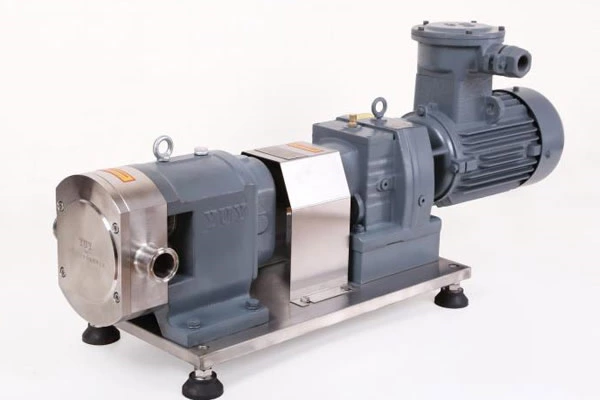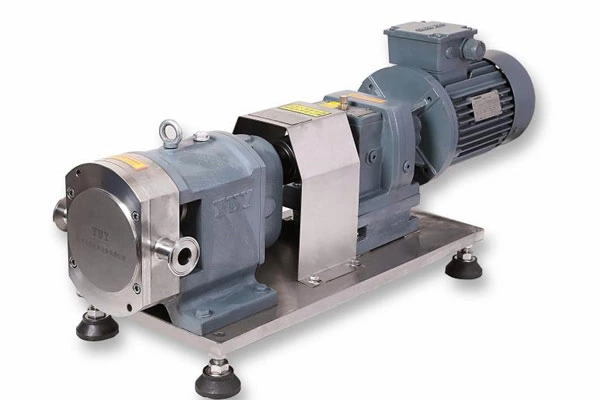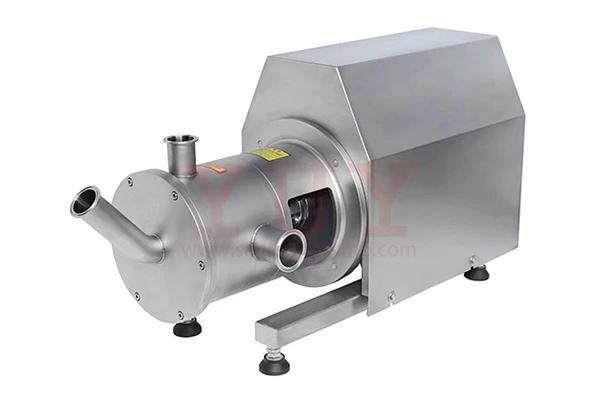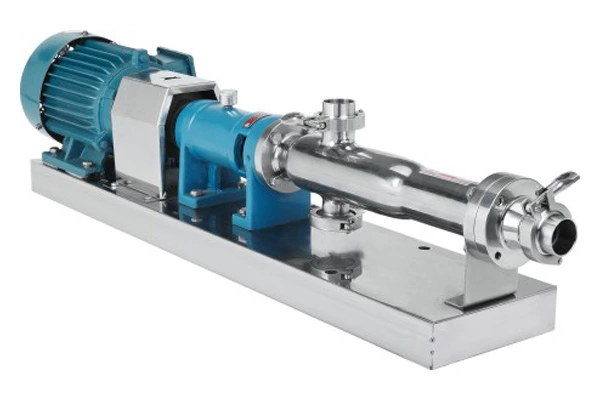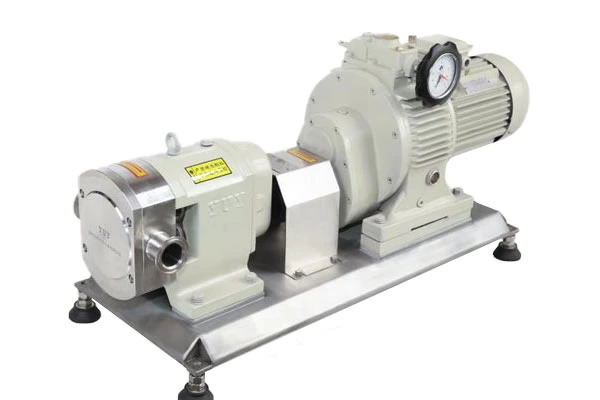What Factors Should Be Considered For Sanitary Rotary Vane Pumps
Factors that should be noted when choosing Sanitary Rotary Lobe Pump:
1. According to the layout of the device, terrain conditions, water level conditions, operating conditions, economic scheme comparison and other factors
2. Consider the selection of horizontal, vertical and other types (pipeline, right-angle, variable angle, corner, parallel, vertical, vertical, submersible, easy-to-disassemble, submersible, non-clogging, self-priming, gear, oil-filled, water-filled).
Horizontal pumps are easy to disassemble and assemble, easy to manage, but large in size, expensive, and require a large floor space;
Vertical pumps, in many cases, the impeller is submerged in water and can be started at any time, which is convenient for automatic or remote control, and is compact, with a small installation area and a relatively cheap price.
3. According to the properties of the liquid medium, determine the clean water pump, hot water pump, oil pump, chemical pump or corrosion-resistant pump or impurity pump, or use a non-clogging pump.
Pumps installed in explosion areas should use explosion-proof motors according to the level of the explosion area.
4. The vibration quantity is divided into: pneumatic, electric (electric is divided into 220v voltage and 380v voltage).
5. According to the flow rate of the sanitary rotary vane pump, choose a single suction pump or a double suction pump: according to the head height, choose a single suction pump or a multi-suction pump, a high-speed pump or a low-speed pump (air conditioning pump), and the efficiency of a multi-stage pump is lower than that of a single-stage pump. When both single-stage pumps and multi-stage pumps can be used, it is advisable to choose a single-stage pump.
6. After determining the specific model of the pump and what series of pumps to use, the specific model can be determined on the model spectrum or series characteristic curve according to the two main performance parameters of the maximum flow and the head after amplifying the 5%-10% margin.
If the pump falls on the characteristic curve, then the pump is the one to be selected. However, this ideal situation is generally not rare. Usually, the following situations will occur:
A. The first type: The intersection is above the characteristic curve, which means that the flow meets the requirements, but the head is not enough. At this time, if the head difference is not much, or the difference is about 5%, it can still be selected. If the head difference is large, choose a pump with a larger head. Or try to reduce the pipeline resistance loss.
B. The second type: The intersection is below the characteristic curve. Within the fan-shaped trapezoidal range of the pump characteristic curve, this model is preliminarily determined, and then whether to cut the impeller diameter is determined based on the difference in head. If the head difference is very small, it will not be cut. If the head difference is very large, it will be cut according to the required Q, H, and according to its ns and cutting formula. If the intersection does not fall within the fan-shaped trapezoidal range, a pump with a smaller head should be selected.
When selecting a pump, sometimes it is necessary to consider the production process requirements and select Q-H characteristic curves of different shapes.
For example, if the liquid level is to be transported to a container where a certain liquid level must be maintained, the liquid will become thinner, the flow rate will change greatly, and the head will change very little. For this reason, a pump with a flat H-O curve should be selected. Another example: if the oil is sent to a tubular heating furnace, if the flow rate changes little during operation, coking is likely to occur in the furnace tube. To avoid this situation, it is hoped that when the flow rate decreases slightly, the pressure of the oil in the tube will increase significantly, so that the coke scar that is just about to be formed will be washed away by the higher liquid flow pressure. At this time, an oil pump with a relatively steep Q-H curve should be selected.
7. After the pump model is determined, for water pumps or pumps whose physical and chemical media of the conveying medium are similar to water, it is necessary to go to the relevant product catalog or sample and calibrate according to the performance table or performance curve of the model to see if the normal working point falls in the priority working area of the pump? Is the effective NPSH greater than (NPSH). Can we also use NPSH to correct the geometric installation height?
8. For liquid pumps that convey viscosity greater than 20mm2/s, it is necessary to convert the water test pump characteristic curve into the performance curve of the viscosity, especially to carefully calculate or compare the suction performance.
9. Determine the number of pumps and the standby rate:
For pumps that operate normally, generally only one pump is used, because a large pump is equivalent to two small pumps working in parallel (with the same head and flow), and the efficiency of a large pump is higher than that of a small pump. Therefore, from the perspective of energy saving, it is better to choose a large pump instead of two small pumps. However, in the following cases, two pumps can be considered to work in parallel:
The flow rate is very large, and one pump cannot reach this flow rate.
For large pumps that need a 50% standby rate, two smaller pumps can be used, and two standby (a total of three pumps)
For some large pumps, pumps with 70% flow requirements can be selected for parallel operation without standby pumps. When one pump is overhauled, the other pump still undertakes 70% of the production.
For sanitary rotary vane pumps that need to run continuously for 24 hours, three pumps should be kept in reserve, one for operation, one for standby, and one for maintenance.
